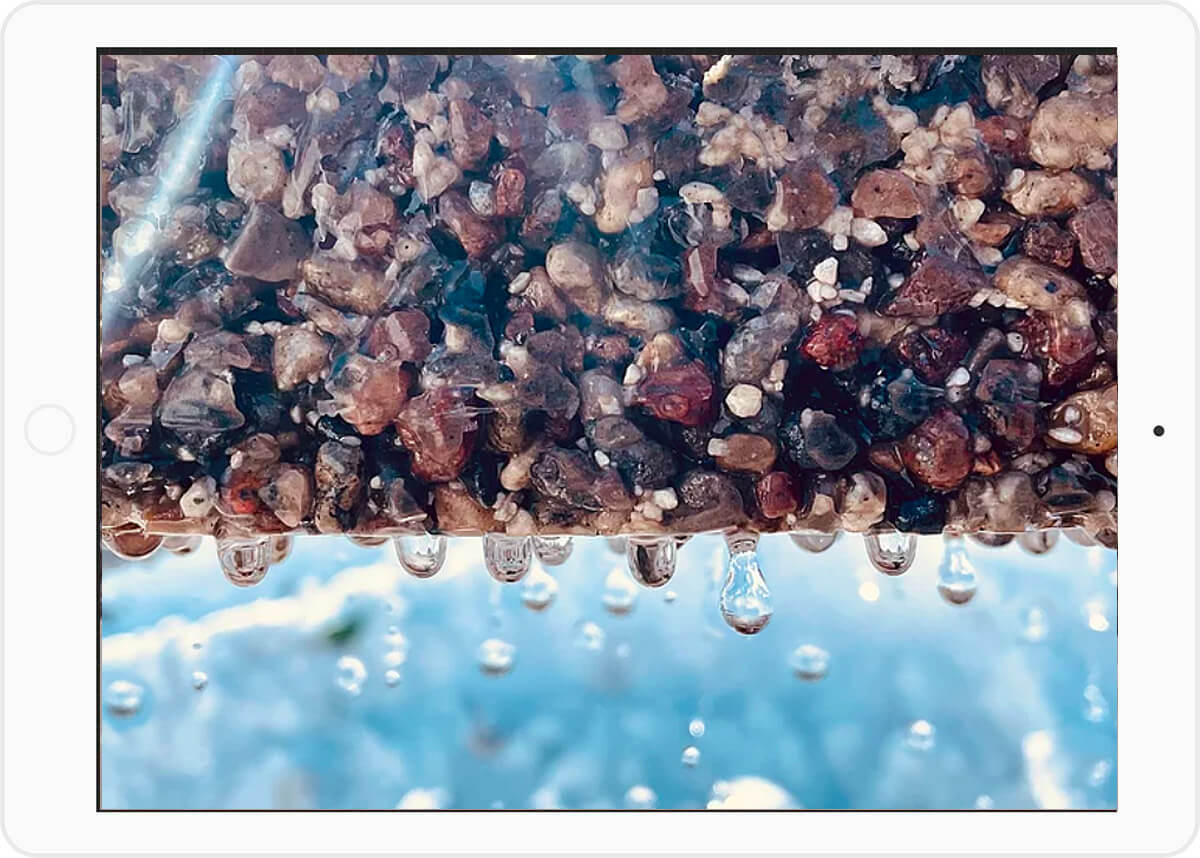Call Today – (416) 875-9848
Call Today – (416) 875-9848

Permeable paving has emerged as the preferred surface option for various applications, including driveways, patios, walkways, tree surrounds, and more. This shift is not surprising, especially considering the detrimental impact of “impermeable” surfaces on our landscape. Building a resilient landscape has become a top priority, making it essential to understand how permeable pavement works. Let’s delve into StoneSet, a revolutionary permeable pavement solution. Exclusively available from Dream Pave.
Green and Resilient Infrastructure
Traditional surfaces like asphalt and concrete are characterized as “hard” and “impermeable,” resulting in limited options for stormwater and surface run-off. This often leads to flooding and stormwater pollution. In contrast, StoneSet permeable pavement offers a sustainable alternative with its intelligent formula that creates high-strength surfacing while allowing rainwater to infiltrate into the soil. By facilitating natural drainage, permeable pavement helps alleviate the burden on local waterways and reduces pollution.
One of the most significant environmental benefits of permeable pavement lies in its ability to recharge natural aquifers. As water seeps through the permeable surface, it filters into the soil below and eventually reaches the groundwater table. This groundwater recharge process is vital for maintaining aquifer system balance and ensuring a sustainable supply of fresh water for ecosystems and human consumption. By promoting aquifer replenishment, permeable pavement supports biodiversity, improves water quality, and helps alleviate the effects of drought and water scarcity. Additionally, by decreasing dependence on surface water sources, permeable pavement helps protect against excessive extraction and depletion of groundwater reserves.
The material composition of permeable pavement is carefully tailored to achieve a delicate balance between water permeability and structural integrity. Typically, permeable pavement materials consist of aggregates such as gravel, crushed stone, or porous concrete combined with a permeable binder or adhesive. These materials are chosen for their capacity to form a porous matrix that enables water flow while maintaining adequate load-bearing ability. Advanced engineering techniques, including particle size distribution and compaction methods, ensure that permeable pavement retains its strength and durability over time, even under heavy traffic and adverse weather conditions. By optimizing material composition and construction techniques, engineers can create permeable pavement systems that effectively manage stormwater runoff while providing long-lasting performance and reliability.
In conclusion, StoneSet by Dream Pave represents a significant advancement in permeable pavement technology, offering a green and resilient solution for sustainable infrastructure development. By effectively managing stormwater and replenishing aquifers, StoneSet permeable contributes to the creation of more environmentally friendly and resilient urban environments.
Understanding the intricate science behind permeable pavement is essential for appreciating its multifaceted role in sustainable urban development. By allowing water to seep through and infiltrate the ground, permeable pavement provides a comprehensive solution to tackle the issues of urbanization, climate change, and water management. As cities worldwide grapple with the increasing pressures of population growth and environmental degradation, permeable pavement emerges as a resilient and adaptive infrastructure solution. At Dreampave.ca, we are committed to advancing the science of permeable pavement and delivering innovative solutions that support a greener, more sustainable future for generations to come.
Connect with Dream Pave Permeable by booking a complimentary Discovery Call with our Resin Bound aggregate Team.
Dream Pave are the leading permeable pavement installers proudly servicing the Greater Toronto Area. We install Residential, Commercial, Municipal and Institutional permeable projects. Dream Pave specializes in resin bound aggregate, and our team is ready to solve your permeable pavement objectives.
Dream Pave is Canada’s Exclusive Distributor of StoneSet Premium Resinl
© 2025 Dream Pave Permeable
All Rights Reserved.